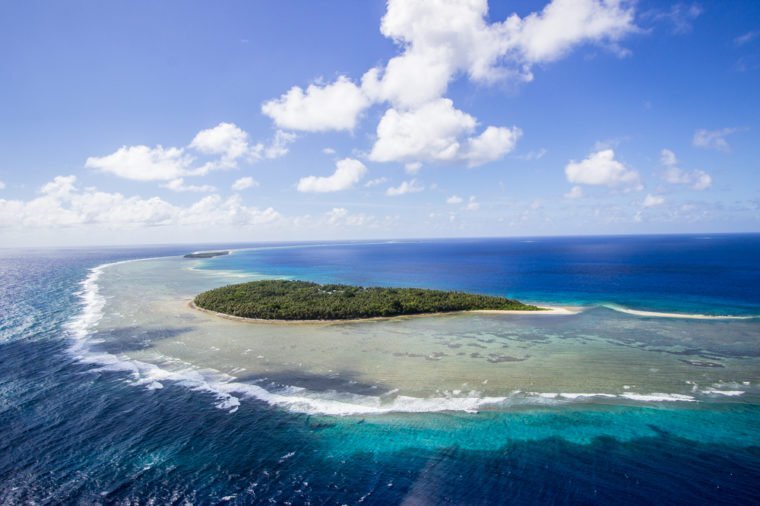While the governments and public organisations are fighting to reduce the growing Carbon dioxide levels, various countries are now witnessing growing public outrage, especially from the youth. The young generation of many countries are worried about their future and the risks such as increasing sea levels as they fear that it will impact big cities around the world. According to a new research, some small islands spread across oceans are growing bigger in size, amid growing sea levels globally.
“Counter to predictions, popular media coverage, and political proclamations, recent studies have shown that the majority of reef islands have been stable or have increased in size since the mid-20th century,” a research team led by coastal geomorphologist Murray Ford from the University of Auckland in New Zealand said.
The team of researchers investigated the Jeh Island in the Marshall Islands using photographs, radiometric dating, and high-resolution satellite imagery. After thier investigation the found out that the present-day Jeh island continued to expand despite rising in local sea levels.
Jeh Island is one of the 56 islands that make up the Ailinglaplap Atoll, part of the marshall islands are low-lying islands that are considered to be among the most endangered nations of the Earth as they are facing the threat of climate change due to rising sea levels.
However, in this case Jeh island is an exception and it doesn’t imply that the climate change threat has been softened. Humanity still faces serious threats due to growing temperatures and increasing sea levels.
According to remote-sensing data, Jeh Islands size has increased by 13 percent since 1943. The land has grown from 2.02 square kilometers in 1943 to 2.28 square kilometers in 2015. The current island has now formed from sediment joining four separate islands that have been submerged in water before.
“By radiocarbon dating, material from parts of the island observed to have been deposited since 1943, we are able to show that modern, reef sediments are actively driving island growth. These findings show that islands are able to grow under present-day conditions by accumulating sediment produced on the surrounding reef,” read the research paper published.
A 2018 analysis of over 30 coral atolls in the Indian Oceans and Pacific region said 88.9 percent of 709 islands were either stable or increased in area in the last few decades and none of them lost any land overall.
However, those assumptions have been found to be flawed as the date taken by the research team taken for other paper, suggests no such stability was maintained over the decades despite growing sea levels and climate around the earth.
“Such projections are founded on the assumption that islands are geologically static landforms that will simply drown as sea-level rises,” Ford, and his co-authors, explained in another study published last year.
The research finding tells that the newly founded part of the Jeh island is generated by organic material produced by the reef which is different from older sediment that was emerged as the island’s structure.
“The coral reefs which surround these islands act as the engine room of island growth, producing sediment which is washed up on the island shoreline. Healthy coral reefs are essential for this process to continue in the future,” said Ford in the paper.

